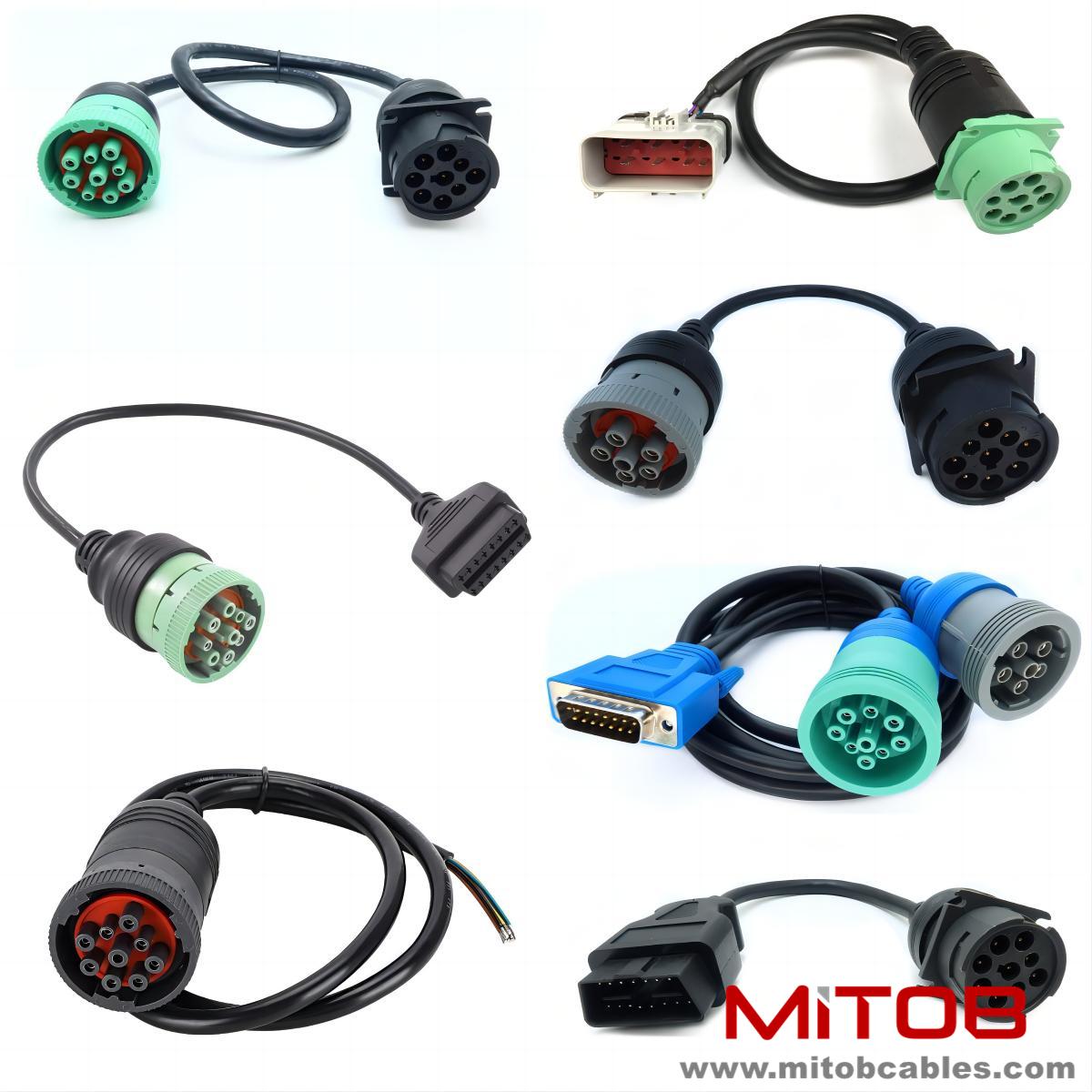What are the advantages of J1939 to OBD2 cable compared to traditional J1939 cable?
The J1939 to OBD2 cable is significantly superior to traditional J1939 cables in terms of compatibility, diagnostic functionality, data acquisition efficiency, installation convenience, and equipment protection through protocol conversion and hardware adaptation. The specific advantages are as follows:

1. Compatibility extension: covering more vehicle models and devices
Traditional J1939 cable: Designed specifically for commercial vehicles, it only supports heavy-duty vehicles based on the J1939 protocol (such as trucks and engineering vehicles) and cannot be directly connected to passenger cars or general diagnostic tools.
J1939 to OBD2 cable: Through protocol conversion, the J1939 signal is converted to the OBD2 standard interface, which is compatible with all vehicles that support OBD2 (including passenger cars, light trucks, etc.). It is also compatible with general OBD2 diagnostic instruments, GPS trackers, data recorders, and other devices, greatly expanding its usage scenarios.
2. Diagnostic function upgrade: supports standardized fault code reading
Traditional J1939 cable: using the SPN/FMI fault code system requires specialized software analysis, and different manufacturers may customize the code, increasing diagnostic complexity.
J1939 to OBD2 cable: It can map J1939 fault codes to the P-code system of OBD2, and directly read standardized fault information (such as engine faults and emission issues) through a universal diagnostic instrument, simplifying the maintenance process and reducing technical barriers.
3. Improved data acquisition efficiency: real-time monitoring and advanced analysis
Traditional J1939 cable: The data format is complex and requires professional software decoding, and some parameters need to be manually requested, making it difficult to achieve real-time monitoring.
J1939 to OBD2 cable: Supports obtaining standardized parameters (PID) such as vehicle speed, RPM, oil temperature, and fuel consumption directly through the OBD2 interface. Combined with third-party software, it can achieve real-time data visualization, historical record analysis, and remote monitoring, providing data support for fleet management.
4. Optimization of installation convenience: plug and play and hidden deployment
Traditional J1939 cable: It needs to be connected to the vehicle's J1939 dedicated interface (usually located at the bottom of the cab or engine compartment), and the original connector needs to be disassembled, making installation complex and easily exposed.
J1939 to OBD2 cable: adopting a Y-shaped distribution design, one end is connected to the original J1939 interface of the vehicle, and the other end provides J1939 female head (retaining the original vehicle function) and OBD2 male head (for external equipment use), without disassembling the original circuit, and can be hidden and installed under the dashboard to enhance aesthetics and safety.
5. Equipment protection and stability enhancement
Traditional J1939 cable: directly connected to the vehicle bus. If there is an electrical fault (such as short circuit, overvoltage) in external devices, it may damage the vehicle ECU.
J1939 to OBD2 cable: Built in electrical isolation and protection circuit to prevent external devices from interfering with the vehicle bus. Some products also use flame-retardant materials and waterproof design to adapt to harsh working environments and improve long-term stability.
Contact: Kevin
Phone: 0086-18823374992
E-mail: kevin@mitobcable.com
Whatsapp:
Add: Bld B2, Floor7 , Xinghe Zhongkai AI Industrial Park, Zhongkai High-tech Zone, Huizhou,China